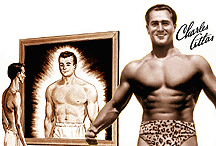Methods

One of the most interesting approaches I’ve taken recently is blogging. I’ve used it with individual clients who are out of town as well as those who are local. I’ve also used it with groups. These blogs are closed to the public, of course.
The blog is essentially an online journal. Participants blog assignments I give them, as well as posting spontaneous writing. An important difference from the usual journal is that the blog can easily involve imagery -- borrowed images or ones the client makes himself.
But the principal difference from handwritten journals seems to be an effect of the medium itself. I have repeatedly seen clients bring up material in cyberspace that they don’t bring up in the consulting room. I assume this has something to do with the fact that cyberspace is so dense with imagery and thus feeds the imagination.
My role is to respond to blogged material where appropriate. LIke every method I use, though, the activity itself is the goal, since my first assumption is that the encounter with the imagination at depth is inherently healing.
Body-life coaching
I know from personal experience and from many studies that exercise is often more effective for the treatment of anxiety and depression than drugs. I also know that it's hard to get the typical depressed client motivated to go to the gym. Thus my idea to directly combine Imaginal Training and personal training at a gym.
By combining the two, the client can directly address body-image issues (including the dysmorphia so common among gay men) with immediate support. Many other "issues" arise when people become more conscious of their bodies, so there is no limit on what can be discussed in the process portion of a session.
And it doesn't hurt that by combining Imaginal Training and personal training in one session, clients can save a lot of money.
I’ve worked out for most of my adult life and, in my 20s, was a personal trainer at a YMCA -- long before that was considered a usual occupation.
A few assumptions
Imaginal Training starts with a few assumptions. I’m always happy to discuss them and I’m willing to revise them when it seems appropriate:
-
*The first is that the encounter with the imagination is inherently satisfying. Any artist of any type can tell you this.
-
*A second assumption is that the use of the imagination is not limited to artists.
-
*The third assumption is that work that involves the body as well as the psyche helps integrate what the imagination has to teach us.
-
*Fourth, the stranger the contents of our imagination, the more it often has to teach us.
-
*Fifth, the more painful it is, the more it likewise often has to teach us. But pain need not eclipse humor. Putting down psychology’s tragic lens is almost always a positive step.
How it works
Here are a few of the tools I employ in Imaginal Training. (I usually suggest prospective clients, particularly for workshops, read Jane McGoldrick’s article for Common Boundary magazine.)
TALKING: The most effective talking is in service to active imagination. This can be literal articulation of fantasy or it can involve a piece of art, writing or music that we use for the context of discussion.
DREAMWORK: Freud famously called the dream “the royal road to the unconscious” and I think he was entirely right. Dreams -- unless they are “lucid” -- are largely outside our control, so they provide unedited glimpses of what is often behind our “issues.” Equally important, they often reveal the path we need to take.
SANDTRAY: The sandtray is, basically, a tabletop sandbox. The client constructs a scene in the tray with various figures he selects from my collection. It sounds almost ridiculous but I’ve rarely had a client not be amazed by how much gets expressed in the scene that’s not necessarily visible at first glance. The sandtray provides, basically, a canvas for the construction of an awake dream.
ENACTMENT: I have experience in numerous modalities that employ enactment and movement. This can be done in individual work but is usually done in group work. The enactments are based on the client’s own story. As we play with the story, “dreaming” it in different directions, the client gets an idea of how many choices she has available despite feeling cornered.
PERFORMANCE: Performance differs from enactment in that it’s a finished piece of work -- performance art. These are always part of the Greeting the Muse workshop and are based on riddles that I give clients. I occasionally assign performance pieces to individual clients too.
BREATHWORK: This involves deep breathing while listening to evocative music. It produces an altered state in which people often have dreamlike experiences. Although such work is at least as old as the Sufis, its greatest contemporary interpreter is Stanislav Grof, who did the original research into LSD and psychotherapy. When LSD was outlawed, he developed breathwork as an alternative way of profoundly altering consciousness.
JOURNALING: This, which may occur on paper or in a blog online (see “Blogging at right), involves spontaneous writing. But I also make assignments.
‘Imaginal blogging’




